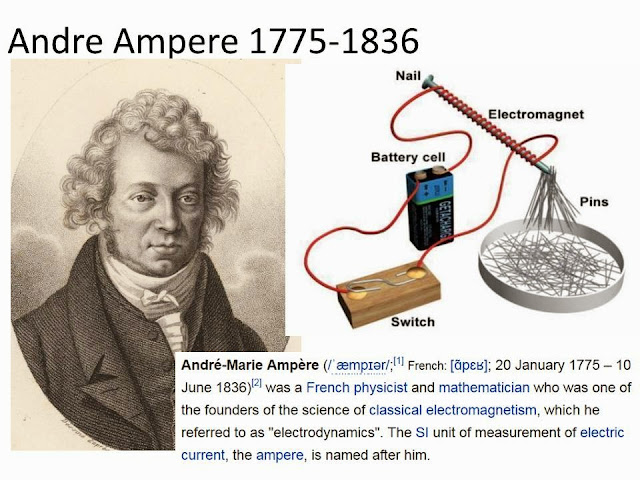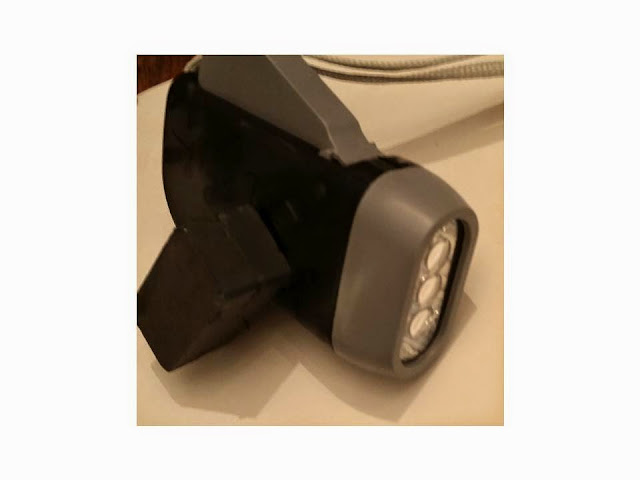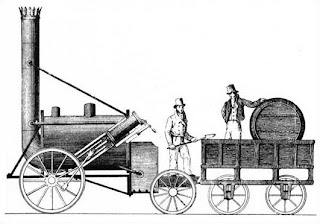"If I have seen further than others, it is by standing upon the shoulders of giants." - Isaac Newton
Why learn the history? New innovations stand on the shoulders of those who have gone before.
The speed at which things now change indicate the urgency of understanding the process of innovation.
Just for fun:
40 Maps That Will Help You Make Sense of the World
https://unofficialnetworks.com/2020/01/31/maps-make-sense-of-the-world/Students heading into their first year of college this year...
https://www.marist.edu/-/marist-mindset-list-class-of-2024
We live in the information age.
Change is expected.
New generations do not do things the way older generations did.
Now:
Make a house frame in a single day
Then:
200 years to build a church.
Discussion question:
Why were there so few innovations in the early years?
We have progressed more in the last 200 years, than in the previous 5,000+ years....
For thousands of years, people farmed with crude manual labor, lived their whole life within a small radius, battles were fought with spears and arrows - technology was stagnant for thousands of years...
- Communication & Transportation.
We have progressed more in the last 200 years, than in the previous 5,000+ years....
For thousands of years, people farmed with crude manual labor, lived their whole life within a small radius, battles were fought with spears and arrows - technology was stagnant for thousands of years...
- Communication & Transportation.
 No printing press, no internet, no phones, everyone had to reinvent the wheel for themselves because they could not learn from anyone except the people living in the same village as them.
No printing press, no internet, no phones, everyone had to reinvent the wheel for themselves because they could not learn from anyone except the people living in the same village as them.Moral of the story?
It's important to learn how to write, present, and otherwise share information. Information is key to engineering.
- No written language
- Limited verbal language
- Limited means of transportation
- They didn't go to school
- Spent most of life as hunter / gatherer
- Built using trial and error
- Used intuition
- Craftsmen
Lesson of Prehistoric Man: You can make things without understanding the science behind why it works.... but the more you understand, the better your product will be.

http://en.wikipedia.org/wiki/Nobel_Prize
Discussion Question:
Are we better off?
Archimedes refused to release information that could be used to make more effective weapons; he knew it would be used for evil... only when his home city was no longer able to hold off Roman attacks did he release his inventions to the military.
1.3 Earliest Days
- Limited verbal language
- Limited means of transportation
- They didn't go to school
- Spent most of life as hunter / gatherer
- Built using trial and error
- Used intuition
- Craftsmen
Lesson of Prehistoric Man: You can make things without understanding the science behind why it works.... but the more you understand, the better your product will be.

http://en.wikipedia.org/wiki/Nobel_Prize
Discussion Question:
Are we better off?
Archimedes refused to release information that could be used to make more effective weapons; he knew it would be used for evil... only when his home city was no longer able to hold off Roman attacks did he release his inventions to the military.
1.3 Earliest Days
- improved ways to hunt and fish
- methods for providing shelter
- Weapons for power struggles
- religious observances
Everyday life was an engineering project.
Every person was an engineer
4000 - 3500 BC in Mesopotamia
Egypt and Mesopotamia
The dawn of specialization.
- Toolmakers concentrated on making tools, Farmers concentrated on their farm, hunters concentrated on hunting. Working cooperatively in larger communities allowed everyone to attain greater skills in areas of specialization.
4000-2000 BC
- copper and bronze tools
- stone tools
- development of the plow
- wheel, sailing boat, methods of writing
Pyramids 2700-2500 B.C.
The great Pyramid
- largest masonry structure ever built
- 756 feet per side, 480 feet tall - dimensions indicate they understood 3.14159
- 2.3 million stone blocks, each weighing between 2.5 tons (5,000 pounds) to 20 tons (40,000 pounds)
 - 58,000,000 tons total.
- 58,000,000 tons total.To build it, had to - transport large stones long distances
- aligned almost perfectly North South
- create an almost perfect square (only a few inches off)
- symmetrical, precise angles
- Ingeniously design internal chambers that would not cave in under the immense weight of the rocks above it through use of relieving chambers above rooms.
- Precision achieved despite being built on irregular rocky knoll.
- Has survived earthquakes, climate changes, etc. still standing after thousands of years.
- the only one of the 7 wonders of the world still standing.
1.4 Ancient Engineering
Parthenon in Athens : 447-438 B.C.House 40' tall Athena statue Ratios and dimensions indicate an understanding of math.
Roman Aqueduct:
Roman Roads
- 4-6" bed of sand
- large flat stones
- clay cement
- retaining walls
- concrete
- Gravel
- roads were 2 to 5 feet thick
- Romans understood the importance of transportation - roads bound their empire together.
- roads encouraged the free exchange of ideas, joined otherwise isolated communities.
The Great Wall of China: ~220 B.C.
Purpose - military - repel Mongolians, protect commerce.
3,080 miles long
Metallurgical and Materials Engineering:

Empires rose and fell based on materials engineering.
Stone Age -
ended between 4500 BC and 2000 BC with the advent of metalworking.
Bronze Age -
The use of copper and it's alloy bronze (Copper + Tin)
Copper melts at 1,085°C
Tin - melts at 231.9°C
Iron Age -
Iron melts at 1,538°C
Harder to melt - harder to make, plus you have to worry about impurities introduced in the heating process. (Impurities generally make iron brittle and worthless)
The stronger the material a society had, the more it could build, the more powerful the military (long swords vs. short swords) the more powerful the society.
Engineering is dependent on the strength of the materials it has to work with.
Engineering is dependent on the strength of the materials it has to work with.
1200 B.C.
- better iron, better swords
- Siege towers
- Greeks invent manufacturing
- Archimedes introduces math
- high quality concrete used for roads, bridges, and aqueducts in Rome.
http://en.wikipedia.org/wiki/Eureka_(word)
False Teeth 750 BC in Etruria (Italy)
Gears, 4th century BC in China
AD 1-1000
- Chinese develop math

- Cotton and silk manufactured
Steam Turbine 1st century Hero of Alexandria:
Paddle wheel boat - Romans
Spinning Wheel - Invented in India, between 500 and 1000 A.D.
The ambulance : In the 11th Century in Lebanon and Israel the ambulance was invented because of the crusades.
AD 1000-1400
- silk and glass industries grow
- Leonardo Fibonacci (1170-1240) invents algebra
AD 1400-1700
1439: The printing press is invented in the Holy Roman Empire by Johannes Gutenberg before 1440, based on existing screw presses. The first confirmed record of a press appeared in a 1439 lawsuit against Gutenberg.
- Metallurgy! De re Metallica by Georgius Agricola
- First timed bomb - Giambelli
- The first water closet (toilet) England
- Galileo makes and looks through telescopes
- Windmills - Leeghwater
- Pendulum-driven clock - Huygens
- Watch spring - Hooke
- Royal Society of England - first science community
- Isaac Newton makes first reflecting telescope
- First steam pump - Savery
- Agriculture, mining, textile, and glass-making industries expanded
- Scientific Method originates
- Humanities separated from science
- Boyles' Law - gas pressure varies inversely with volume
- James watt makes first rotary engine

- 1st Civil Engineering School
- First submarine
- pudding furnace, and crucibles for making iron
Electric Motor: 1834: Moritz von Jacobi, a German-born Russian
1800-1825
- Automation
- First railroad locomotive
- Fourier - complex wave = sum of simple waves
- Fulton steamboat service
- Chemical symbols developed
- Wire telegraph
-photography
- electromagnetism
-thermocouple
- Aluminum
- Electric current in motors - Andre Ampere
- Thermodynamics - Carnot
1825-1875
- rotary printing press
- reinforced concrete
- Singer invents sewing machine
- symbolic logic - Boole
- celluloid - synthetic plastic - Alexander Parkes
- Mass produced steel - Bessemer
- First oil well drilled in Pennsylvania
Typewriter perfected
1875-1900
-Phonograph - Thomas Edison
- Light bulb - Edison?
Gas engine - Daimler
Automobile - Karl Benz
1900-1925
- My grandparents were born
The "golden" generation has lived long enough to see:
1909: The first instantaneous transmission of images, or television broadcast, is carried out by Georges Rignoux and A. Fournier.
- Wright brothers: 1871-1948
power vs. refinement...
 Detroit center of auto industry
Detroit center of auto industry
stainless steel in Germany
Tractors
First commercial airplane between London and Paris
Diesel locomotives
1933: FM radio is patented by inventor Edwin H. Armstrong.
1925-1950
- Sound recordings
- The first demonstration of the instantaneous transmission of images was by Georges Rignoux and A. Fournier in Paris in 1909. A matrix of 64 selenium cells, individually wired to a mechanical commutator, served as an electronic retina. Philo Farnsworth gave the world's first public demonstration of an all-electronic television system, using a live camera, at the Franklin Institute of Philadelphia on August 25, 1934.
- VW beetle
- First nuclear bomb 1945
The "golden" generation has lived long enough to see:
1909: The first instantaneous transmission of images, or television broadcast, is carried out by Georges Rignoux and A. Fournier.
- Wright brothers: 1871-1948
power vs. refinement...
 Detroit center of auto industry
Detroit center of auto industrystainless steel in Germany
Tractors
First commercial airplane between London and Paris
Diesel locomotives
1933: FM radio is patented by inventor Edwin H. Armstrong.
1925-1950
- Sound recordings
- The first demonstration of the instantaneous transmission of images was by Georges Rignoux and A. Fournier in Paris in 1909. A matrix of 64 selenium cells, individually wired to a mechanical commutator, served as an electronic retina. Philo Farnsworth gave the world's first public demonstration of an all-electronic television system, using a live camera, at the Franklin Institute of Philadelphia on August 25, 1934.
- VW beetle
- First nuclear bomb 1945
Movie: Radioactive → write review for b onus points.
1947: Holography is invented by Dennis Gabor
1950-1975
Hovercraft 1955: The hovercraft is patented by Christopher Cockerell.
1956: The hard disk drive is invented by IBM
first artificial satellite
1960: Lasers
Integrated circuits
1969: first manned moon landing
1971: Email is invented by Ray Tomlinson
1973: The first capacitive touchscreen is developed at CERN.
1975-1990
Supersonic transport from US to Europe
Cosmonauts
Columbia Space Shuttle
First artificial human heart
1980: Flash memory (both NOR and NAND types) is invented in Japan by Fujio Masuoka while working for Toshiba. It is formally introduced to the public in 1984.
1990: The World Wide Web is first introduced to the public by English engineer and computer scientist Sir Tim Berners-Lee.
1990-Today
Robots walk on Mars
Computer speed increased
Chunnel from England to France:
Thunderhorse...
Large Hadron Loop finds "God" particle?
Brain-Machine Interface: https://www.cnbc.com/2020/08/28/elon-musk-demonstrates-brain-computer-tech-neuralink-in-live-pigs.html
Artificial Intelligence/Artificial neural network
Green Energy
Space exploration
Space, the final frontier
These are the voyages of the Starship Enterprise
Its five year mission
To explore strange new worlds
To seek out new life
And new civilizations
To boldly go where no man has gone before
What will you see in your lifetime?






































































































